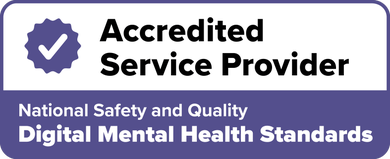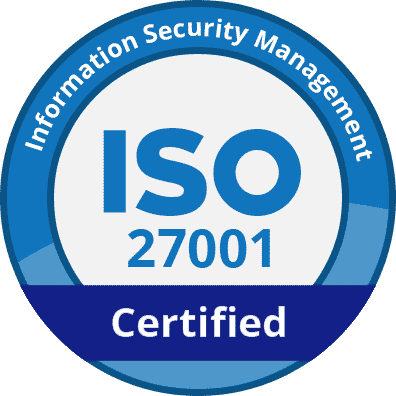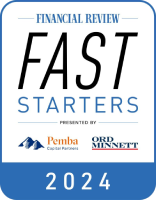How to make a business case for an EAP
In a Nutshell
A strong business case links the employee assistance program (EAP) to outcomes like productivity, retention, and reduced mental health-related costs.
EAPs typically offer confidential counselling across key areas like workplace stress, interpersonal conflicts, and career concerns.
However, modern workplaces now require more than traditional counselling. As such, building a strong EAP business case today also means considering holistic care models that support employees across all aspects of life.
Work-related stress, burnout, and even productivity paranoia are impacting workplaces all over the globe. These issues are a daily reality that influence how teams perform, how long employees stay, and how organisations manage risk.
In Australia, the issue is particularly pressing. A national survey found that 61% of workers reported feeling burnt out, significantly higher than the global average of 48 percent. But, burnout is just one part of a much larger picture. Employees are facing a complex mix of work demands, financial pressure, personal responsibilities, and broader economic uncertainty, contributing to higher rates of absenteeism, presenteeism, disengagement, and staff turnover.
In this environment, providing timely, professional, and confidential mental health support is essential. A well-structured Employee Assistance Program (EAP) helps employees manage challenges early and supports overall organisational health. To secure leadership buy-in, HR and People & Culture leaders must present a clear business case that goes beyond the ethical argument, showing how EAPs deliver measurable value through reduced risk, improved retention, and stronger workforce performance.
Business benefits of a well-implemented EAP

EAPs that are well-structured and properly embedded into workplace culture can drive significant improvements in both employee wellbeing and organisational performance.
Global and local research consistently points to the positive impact EAPs can have when well utilised.
1. Reduced presenteeism
While absenteeism is often discussed in relation to mental health, presenteeism is the bigger cost burden.
Employees who are physically present but mentally unwell may be operating at reduced capacity for long periods. However, a study published in the European Journal of Work and Organisational Psychology supports that engaging with EAP does reduce presenteeism and enhance employees’ functioning and outcomes.
2. Lower absenteeism and fewer claims
Timely access to mental health professionals through EAPs allows employees to address personal and professional issues early, reducing the likelihood of extended absences.
In high-stress industries such as healthcare, education and finance, having an accessible and confidential support system can make the difference between an employee taking a few days off or lodging a formal psychological injury claim.
3. Improved retention and engagement
Modern workers, particularly younger generations, expect their employers to actively support both employee and workplace wellbeing. A study by SHRM revealed that 61% of Gen Z employees would consider leaving their job for one with better mental health benefits.
How to make a strong EAP business case?

To convince senior leaders to invest in an EAP, it’s critical to present the initiative not as a wellbeing add-on but as a strategic solution that protects performance, reduces risks, and enhances organisational health.
A strong business case should be underpinned by relevant data and aligned with measurable business outcomes.
1. Align with business goals and KPIs
Executives want to see how any investment supports broader business priorities. Link the EAP to key organisational goals like improving productivity, reducing staff turnover, complying with Work Health and Safety (WHS) obligations or lowering compensation claim costs.
For example, if your organisation is aiming to improve employee retention by 10% in the next financial year, demonstrate how an EAP can contribute by supporting at-risk staff and improving engagement.
2. Reference local and industry-relevant data
To build a persuasive case for EAP investment, focus on Australian-specific data that ties mental health to productivity, psychosocial risks, employee retention, and other priorities your company has explicitly communicated. Combining national benchmarks with your organisation’s internal data will also make your proposal more targeted and credible.
Below are examples of key data points from reputable sources, but make sure to check if there are more recent findings relevant to your industry.
The World Health Organisation estimates that about 15% of working adults have a mental disorder at any point in their lifetime.
The Productivity Commission’s Mental Health Inquiry Report in 2020 estimated that mental illnesses and suicide cost the Australian economy about $70 billion every year.
Black Dog Institute estimates that Australian businesses lose more than $39 billion per year due to mental illness-related absenteeism, turnover, and productivity decline.
According to Safe Work Australia’s 2024 report, 9% of serious workers’ compensation claims in 2021-2022 were related to mental health. Of these, 25.2% involved work pressure and 27.5% were linked to workplace harassment or bullying. The report also found that workers with mental health claims typically required longer time off work than those with physical injuries.
Approximately 80% of Australia’s top 500 companies have an EAP in place, which signals the value of supporting people’s wellbeing in the workplace.
A study cited by Forbes revealed that about 54% of Gen Z and 58% of Millennials consider a company’s wellness programs when choosing an employer.
This final point is especially important for HR leaders competing for talent. EAPs are no longer a behind-the-scenes service. They are now viewed by candidates as a visible indicator of how much an organisation values its people.
Support this external data with internal findings, like engagement survey results, turnover rates or sick leave trends, to build a case that speaks directly to your organisation’s needs and risk profile.
3. Address legal exposure and compliance
Employers have a legal responsibility to manage psychosocial hazards under Australia's WHS framework. EAPs can form a core part of an organisation’s strategy to meet this duty of care and reduce legal exposure. Framing your EAP proposal as part of a risk mitigation strategy can strengthen its value, especially among your organisation’s legal and finance teams.
4. Include usage and engagement plans
Before recommending an EAP, consult employees through surveys or informal feedback to understand their wellbeing needs. This helps shape a relevant, targeted proposal and signals that the initiative is demand-driven.
To build trust and encourage uptake, highlight that EAP services are confidential and delivered by independent professionals, with no identifying information shared with the employer. Clearly outline how the program will be promoted, how managers will be trained to support staff, and how outcomes will be tracked using anonymous usage data from the provider. This demonstrates a strategic, long-term approach rather than a one-off initiative.
5. Discuss cost-benefit outcomes
Senior stakeholders often want to see the return on investment in simple terms. Present an estimated cost per employee for EAP access and contrast that with potential savings from reduced absenteeism, presenteeism and recruitment costs.
You can use industry benchmarks, like PwC Australia's finding that every $1 spent on mental health programs can return up to $2.30 in value, depending on the industry and implementation.
6. Offer a scalable or pilot option
If budget is a barrier, suggest starting with a pilot program or an EAP that offers both "basic" and more comprehensive packages. Pilot or basic options can reduce upfront costs and allow the organisation to assess engagement and value before committing to a long-term and potentially more expensive contract.
More affordable packages, like Talked for Work's Essential Care package, are especially useful for small to mid-sized teams or organisations testing demand. They also make it easier to scale support based on actual usage, providing flexibility while still delivering measurable outcomes.
Presenting a phased approach shows you’re mindful of both financial risk and organisational readiness, making it easier for decision-makers to say yes.
Explore: Talked for Work packages
Common objections and how to address them
Objection | How to address it |
|---|---|
Will anyone actually use it? | While usage rates vary. Australian employees with EAP access have an estimated overall engagement rate of 11% annually. Even moderate use can reduce risk, support early intervention, and prevent costly absences or claims. Plus, promotion and manager support can significantly boost uptake. |
We already have wellbeing events from time to time. | General wellbeing initiatives are valuable, but they don't replace professional, confidential support. EAPs fill the gap for issues that require qualified clinical care or, in some cases, crisis response. |
We're not sure how to measure success. | EAP providers offer regular, anonymised reports showing usage patterns, issue types, and trends over time. Combined with internal data (like data on absenteeism and turnover), this can help inform ongoing strategy. |
We can't commit to a full annual cost right now. | Flexible pricing models or pilot programs allow you to start small, manage costs, and build internal support before scaling. |
Final thoughts
Employee wellbeing is now a defining factor in how organisations perform, retain talent, and manage risk. For HR and People & Culture leaders, making a business case for an Employee Assistance Program (EAP) means demonstrating how it supports not only employee wellbeing but also long-term organisational outcomes.
The rise of telehealth EAP platforms has made this support more accessible and adaptable than ever. With features like 24/7 remote counselling, app-based booking and digital wellbeing tools, modern EAPs are designed to meet the needs of hybrid, regional and shift-based teams without compromising on quality or confidentiality.
Talked for Work is one example of a modern EAP partner that aligns with these evolving needs. Alongside professional therapy and counselling services, Talked also provides services related to proactive support, crisis response, and psychosocial risks identification and management.
Talked also allows for a seamless transition to Medicare or private insurance for employees who have used up their allowable psychology sessions from their employer but want to continue their therapy. This continuity of care ensures that support doesn’t stop when credits run out and helps businesses protect the long-term health of their workforce.
A well-implemented EAP is no longer a reactive measure. It’s a proactive, strategic tool that can improve performance, reduce risk and demonstrate your organisation’s commitment to its people. With the right partner and a clear business case, now is the time to make mental health a core part of your workplace strategy.
Get Support
Overcome your career and book a free video consultation with one of our therapists








